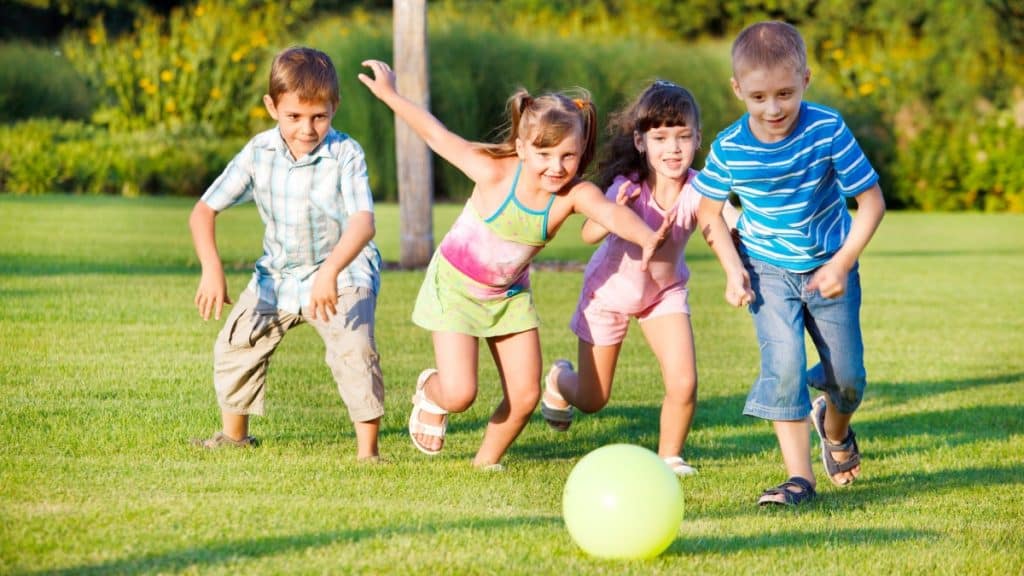Today, technology abounds and innovations keep improving the devices available at people’s fingertips. Personal devices have trickled down and are used in the classroom now as well. In a lot of ways, it can enhance the learning experience. And it can provide the children in the class equal access to learning materials as well as accessibility features.
While there are benefits to these devices, there are also mental and physical reasons to take a break too. It’s important to stand up and step away from screens for their mental and physical development. Not only is it necessary for kids to play off-screen, but outdoor play is paramount too. Keep reading to learn a few benefits of outdoor play.
1. Increases Physical Activity
It’s no surprise that the U.S. is becoming a more sedentary country. Automation and changing work roles find many workers sitting on computers most of the day. And entertainment comes in from screens as well, so that means moving from the office chair to the couch. This is impacting children as well. Increasing obesity rates are just one negative effect. Luckily, getting kids outside to learn and explore can help this.
Encouraging kids to play outside and have fun early can help them develop lifelong habits of movement. If your school or town doesn’t have a lot of options for outdoor play, talk to your school board or parks and rec office about getting new playground equipment and swing sets. Discuss equipment that has education benefits as well. Creating community walking trails would improve the outdoor space as well. Inviting, accessible spaces could even entice families to take walks and bike rides together.
2. Connects Children to the World
With movies and cartoons and video games, it’s easy for kids to go through the day in an alternative reality. Getting them outside to play grounds them in the real world. It can even connect them to the lessons from the classroom. If they’re reading The Very Hungry Caterpillar in class, for example, seeing a one chomping on leaves at recess makes it real. It lets kids better understand how the world works.
Watching the leaves change with the season and flowers bloom is another great learning opportunity. Getting outside gives them the chance to safely explore nature and learn about the world around them. Moving in grass or climbing over stumps and rocks helps with fine motor skills too. They can also learn to take risks and experience different textures of grass, bark, pebbles, and even water and mud. Though messy, kids have such fun jumping in puddles.
3. Helps With Concentration in the Classroom
There is only so long a child, or an adult for that matter, can sit and fully concentrate. So much of what is expected is sitting still, reading, and doing tasks. Getting a break to go and run and be rambunctious can actually help with focus. It also gives them time to be unstructured and make their own choices.
Feeling the dirt beneath your toes and the sunlight on your face also has many positive physiological reactions. Playing outside can even cause anxiety levels to go down. Did you know your serotonin levels increase when you’re in the sun? It can be a boost to your mood and help you feel more calm. That goodness is great for little kids too, and it helps them be more positive and focused when coming back inside.
4. Encourages Scientific Learning
Getting outside gives kids several new ways of learning in different contexts. Having recess is great for concentration and getting out to burn off some energy. But kids can also benefit from outdoor classroom time too. This can especially be true for science classes. Doing a unit about seeds and growth and planting flowers can help them see the real-life application of scientific principles.
They can observe firsthand the stages of plant growth, learn about the importance of soil nutrients, and witness the effects of the weather. Going on a bug hunt or building in the sandbox can give children hands-on learning as well. Outdoor classroom experiences like these not only engage students in hands-on learning but also instill a sense of curiosity and appreciation for the environment around them. (As an added perk, messy activities like making volcanoes are just better outside — less mess!)
5. Fosters Social Interaction
Playing outside allows kids to make up games and play together. They navigate social challenges like someone taking a toy away or losing a game. They make friends, problem solve, and learn to have productive conversations. While these skills can be taught in the classroom, it is a more structured environment.
Being on the playground or at the park, gives kids the space to work together in unstructured play. Caregivers still need to keep a watchful eye to settle disputes, but a little freedom gives kids the space to grow. Teamwork and empathy can be learned through games and play too. Someone being scared on the rope bridge and offering holding hands is one example. Being worried when a friend falls off the swing and helping them is another.
Playing outside is of great benefit to all children. It changes up the pace of the day and lets everyone take a mental break. So get out there and encourage them to enjoy that sunshine. Soon you’ll be hearing plenty of tiny giggles and watching kids experience new fun things outside. It’s truly a magical moment. You can literally watch them learn and grow before your eyes.
